Learn more about MySQL slow log queries
This article brings you relevant knowledge about mysql, which mainly introduces the related issues of slow log query, and also includes show profiles to view the specific running time of sql and other related content. I hope Helpful to everyone.
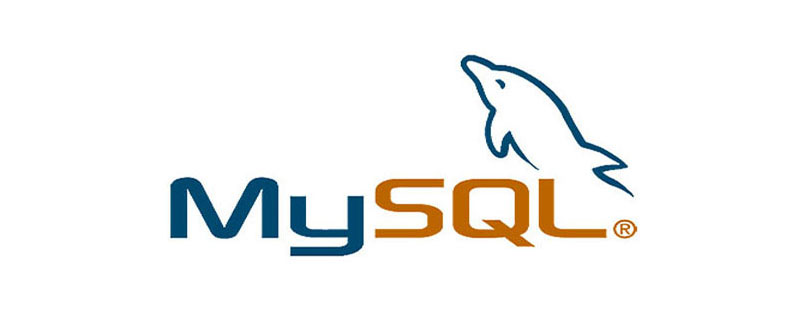
Recommended learning: mysql video tutorial
1. Slow query log concept
For SQL For index optimization issues, we will use explain to analyze SQL statements. But real enterprise-level projects have thousands of SQL statements, and it is impossible for us to analyze them one by one from scratch. Where can we get those long-running, performance-consuming SQL? ?
We can open the slow query log:
Estimate a time limit (20ms, 100ms) based on the specific business and concurrency, and start the business after setting it. After the stress test, open the slow query log, and you will see the SQL that exceeds the execution time, and then use explain to analyze these time-consuming SQL statements.
The steps are as follows:
Open Slow query log switch
slow_query_logSet a reasonable slow query time limit that is acceptable to the business
Stress test execution Various businesses
Check the slow query log and find out all the SQL statements that take time to execute
Use explain to analyze these time-consuming SQL statements , thereby targeted optimization
MySQL can set up slow query logs. When the execution time of SQL exceeds the time we set, these SQLs will be recorded in the slow query log, and then We check the logs and use explain to analyze the execution plans of these SQLs to determine why the efficiency is low. Is it because the index is not used? Or is there something wrong with the creation of the index itself? Or the index is used, but because the amount of data in the table is too large, it takes a long time. At this time, we can divide the table into multiple small tables, etc.
The parameters related to the slow query log are as follows:
(Many global switches defined by MySQL are stored in global variables, which can be viewed with show/set variables Or set the value of global variables)

The slow query log switch is turned off by default
The path of the slow query log: the default is /var/lib/mysql/下
The slow query log records logs containing all SQL statements whose execution time exceeds the value set by the parameter long_query_time (unit: seconds). You can view it with the command on MySQL, as follows:
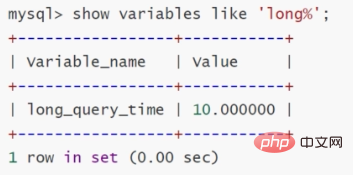
This value can be modified:

2. Slow query log practice
1. Turn on the slow query log switch slow_query_log

When the slow query log switch is turned on, an error message indicates that slow_query_log is a global variable (there are also variables that only affect the current session, such as: long_query_time, profiling ), the modification will affect all sessions, that is, all clients accessing the current MySQL server. 
Turning on the slow query log switch was successful!
2. Set a reasonable and business-acceptable slow query time upper limit long_query_time

View another session
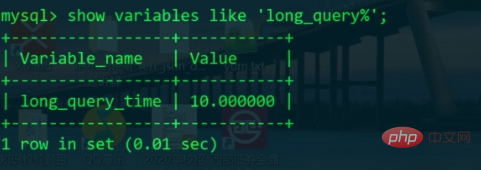
It was found that the default value is still 10s, so long_query_time only affects the current session
3. Stress test to execute various services

Already Exceeds the long_query_time=0.1s we set
4. Check the slow query log
Path: /var/lib/mysql/


5. Use explain to analyze these time-consuming SQL statements to optimize them accordingly

Searched the entire table and scanned the entire primary key index tree Read it again.
We should add an index to the password, and then remember that the password is in string format, because if type conversion is involved, the index cannot be used
3. Show profiles to view the specific running time of SQL
MySQL generally only displays the time to two decimal places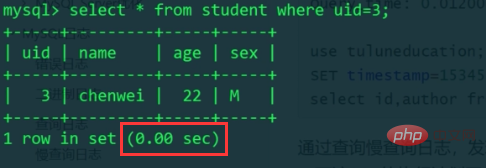
Turn on the profiling switch to display more detailed time
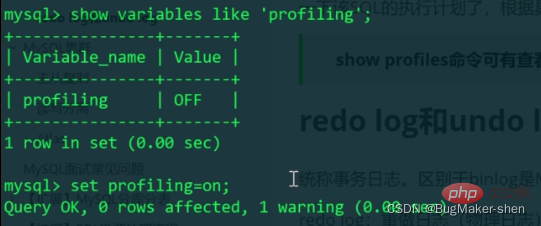
No error is reported, indicating that the profiling variable only Affects the current session
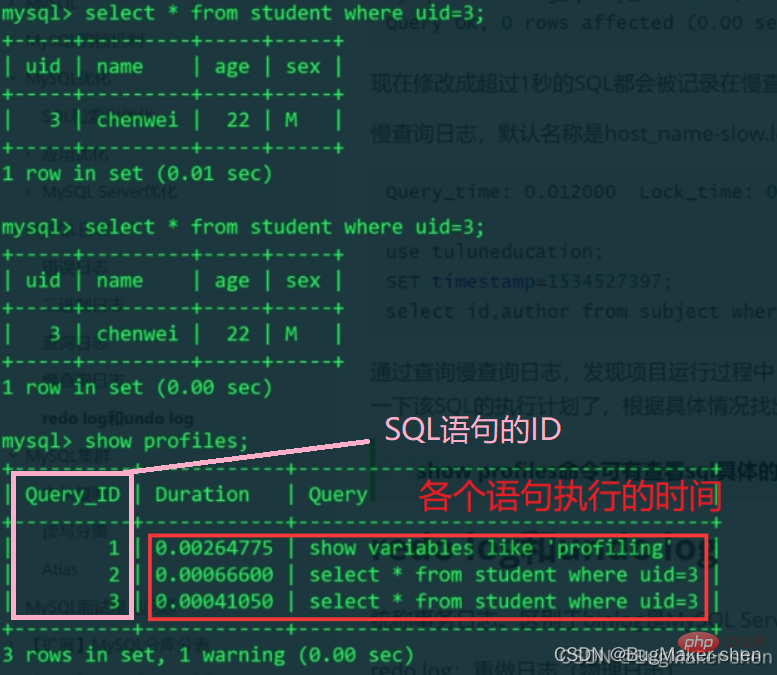
Recommended learning: mysql video tutorial
The above is the detailed content of Learn more about MySQL slow log queries. For more information, please follow other related articles on the PHP Chinese website!

Hot AI Tools

Undresser.AI Undress
AI-powered app for creating realistic nude photos

AI Clothes Remover
Online AI tool for removing clothes from photos.

Undress AI Tool
Undress images for free

Clothoff.io
AI clothes remover

Video Face Swap
Swap faces in any video effortlessly with our completely free AI face swap tool!

Hot Article

Hot Tools

Notepad++7.3.1
Easy-to-use and free code editor

SublimeText3 Chinese version
Chinese version, very easy to use

Zend Studio 13.0.1
Powerful PHP integrated development environment

Dreamweaver CS6
Visual web development tools

SublimeText3 Mac version
God-level code editing software (SublimeText3)

Hot Topics
 1664
1664
 14
14
 1423
1423
 52
52
 1321
1321
 25
25
 1269
1269
 29
29
 1249
1249
 24
24
 Laravel Introduction Example
Apr 18, 2025 pm 12:45 PM
Laravel Introduction Example
Apr 18, 2025 pm 12:45 PM
Laravel is a PHP framework for easy building of web applications. It provides a range of powerful features including: Installation: Install the Laravel CLI globally with Composer and create applications in the project directory. Routing: Define the relationship between the URL and the handler in routes/web.php. View: Create a view in resources/views to render the application's interface. Database Integration: Provides out-of-the-box integration with databases such as MySQL and uses migration to create and modify tables. Model and Controller: The model represents the database entity and the controller processes HTTP requests.
 MySQL and phpMyAdmin: Core Features and Functions
Apr 22, 2025 am 12:12 AM
MySQL and phpMyAdmin: Core Features and Functions
Apr 22, 2025 am 12:12 AM
MySQL and phpMyAdmin are powerful database management tools. 1) MySQL is used to create databases and tables, and to execute DML and SQL queries. 2) phpMyAdmin provides an intuitive interface for database management, table structure management, data operations and user permission management.
 MySQL vs. Other Programming Languages: A Comparison
Apr 19, 2025 am 12:22 AM
MySQL vs. Other Programming Languages: A Comparison
Apr 19, 2025 am 12:22 AM
Compared with other programming languages, MySQL is mainly used to store and manage data, while other languages such as Python, Java, and C are used for logical processing and application development. MySQL is known for its high performance, scalability and cross-platform support, suitable for data management needs, while other languages have advantages in their respective fields such as data analytics, enterprise applications, and system programming.
 Solve database connection problem: a practical case of using minii/db library
Apr 18, 2025 am 07:09 AM
Solve database connection problem: a practical case of using minii/db library
Apr 18, 2025 am 07:09 AM
I encountered a tricky problem when developing a small application: the need to quickly integrate a lightweight database operation library. After trying multiple libraries, I found that they either have too much functionality or are not very compatible. Eventually, I found minii/db, a simplified version based on Yii2 that solved my problem perfectly.
 Laravel framework installation method
Apr 18, 2025 pm 12:54 PM
Laravel framework installation method
Apr 18, 2025 pm 12:54 PM
Article summary: This article provides detailed step-by-step instructions to guide readers on how to easily install the Laravel framework. Laravel is a powerful PHP framework that speeds up the development process of web applications. This tutorial covers the installation process from system requirements to configuring databases and setting up routing. By following these steps, readers can quickly and efficiently lay a solid foundation for their Laravel project.
 Solve MySQL mode problem: The experience of using the TheliaMySQLModesChecker module
Apr 18, 2025 am 08:42 AM
Solve MySQL mode problem: The experience of using the TheliaMySQLModesChecker module
Apr 18, 2025 am 08:42 AM
When developing an e-commerce website using Thelia, I encountered a tricky problem: MySQL mode is not set properly, causing some features to not function properly. After some exploration, I found a module called TheliaMySQLModesChecker, which is able to automatically fix the MySQL pattern required by Thelia, completely solving my troubles.
 MySQL: Structured Data and Relational Databases
Apr 18, 2025 am 12:22 AM
MySQL: Structured Data and Relational Databases
Apr 18, 2025 am 12:22 AM
MySQL efficiently manages structured data through table structure and SQL query, and implements inter-table relationships through foreign keys. 1. Define the data format and type when creating a table. 2. Use foreign keys to establish relationships between tables. 3. Improve performance through indexing and query optimization. 4. Regularly backup and monitor databases to ensure data security and performance optimization.
 MySQL: Key Features and Capabilities Explained
Apr 18, 2025 am 12:17 AM
MySQL: Key Features and Capabilities Explained
Apr 18, 2025 am 12:17 AM
MySQL is an open source relational database management system that is widely used in Web development. Its key features include: 1. Supports multiple storage engines, such as InnoDB and MyISAM, suitable for different scenarios; 2. Provides master-slave replication functions to facilitate load balancing and data backup; 3. Improve query efficiency through query optimization and index use.




